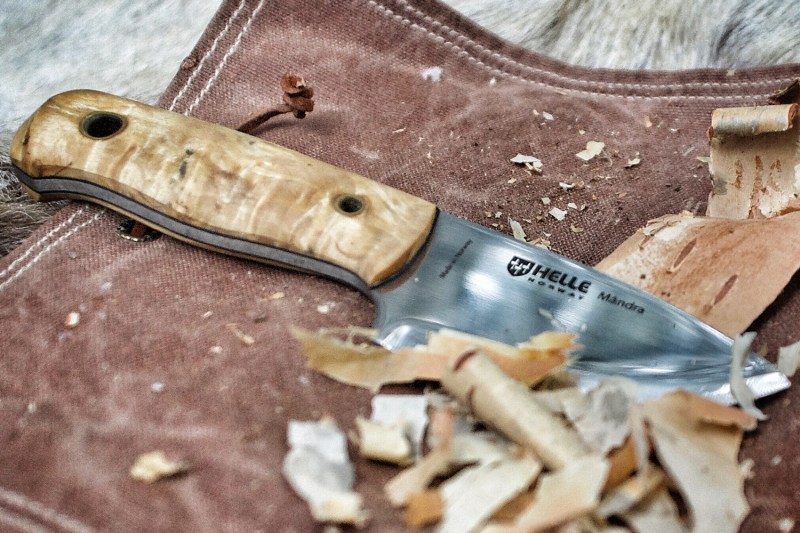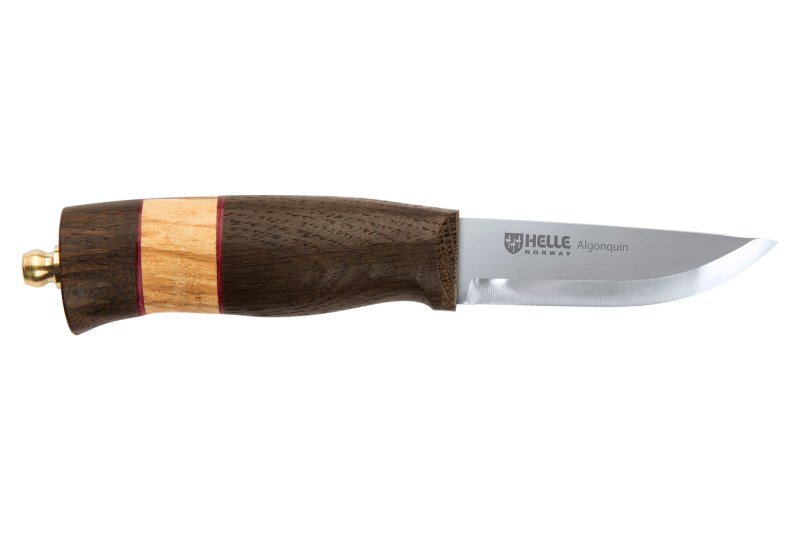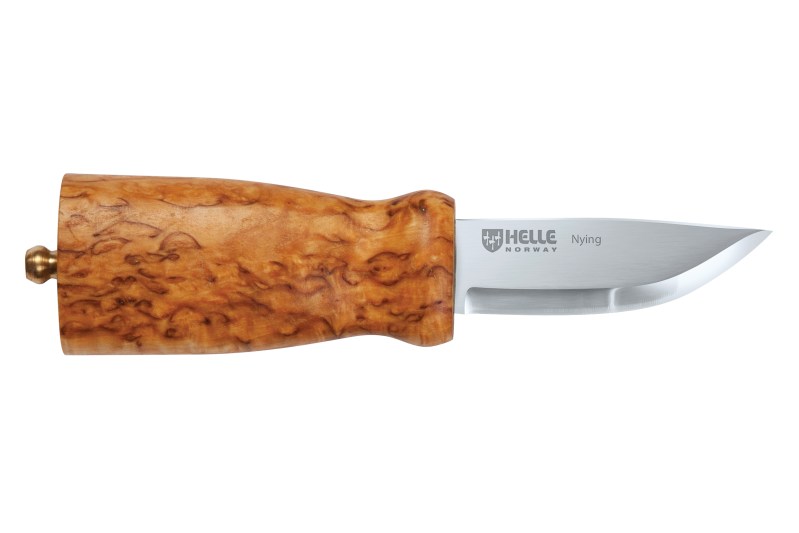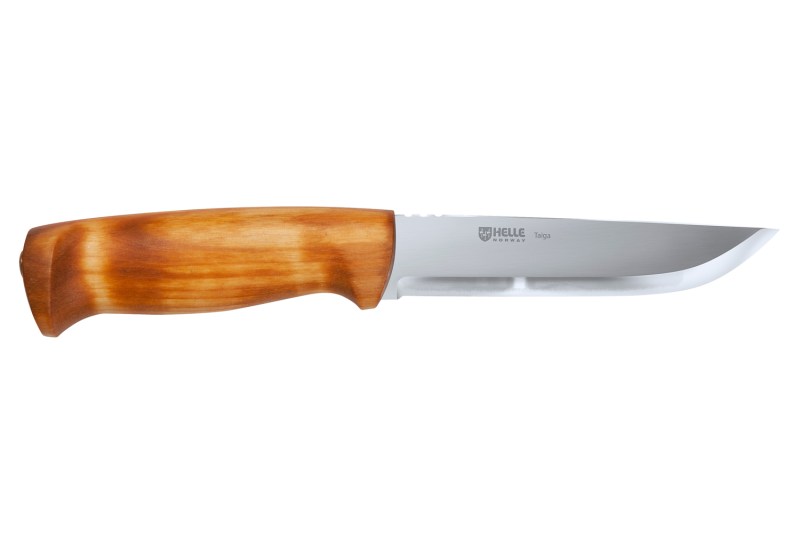Knives are cool, which is why we want to buy them. The problem is that cool, big knife that looks intimidating isn’t perfect for everyone situation, so purpose and material should guide your decision on which type of knife to buy, whether it’s your first or twentieth.

Whether you take up a hobby like wood-working or need a kitchen-to-camp blade, we’re here to cut through the bull and help you find the perfect knife. Of course, we had to get a modern-day Viking brand to help. Helle of Norway’s director of marketing, Anders Haglund, walks through 10 types of Helle knives and their uses so you can make an educated, ego-less decision.
“Keep in mind, there is a different attitude and tradition in every knife depending on the design and background,” Haglund says. “This changes around the world; in Germany, South Africa, Russia, the U.S., pre-set ideas of what a knife should represent change.”
The Scandinavian tradition focuses on knives for practical, outdoor, and hobby uses.
For Indoor and Outdoor Chores
Algonquin – $159

“I carry this small knife on a string hanging around my neck, close-by and easy to reach, so when I need to do chores or head out into the woods, it’s right there,” Haglund says.
With a blade that is only 69mm, you might be fooled to think this traditional Scandinavian-style knife is “too small.” False. It’s a practical, key knife that you’ll use for a dozen different everyday tasks, indoor and out, without worrying about where to carry it.
For Cutting Meat
Mandra – $199

The wider, more rounded shape of the Mandra’s edge-side is perfect for cutting into meat, especially thin slices. “It also always comes out when you’re sitting by the campfire in the evenings, whether you’re cutting meat or working with wood,” Haglund says. This makes sense because Mandra was designed by “Survivorman” Les Stroud. If Stroud uses a small knife that should tell you something. Word to the wise, this is not a survival-specific knife. (These survival knives could actually save your life.)
For Woodworking
Nying – $99

First designed in 1977 and still produced at Helle, the Nying is an extremely great woodworking knife. On first glance, the handle seems awkwardly shaped, “but as soon as you start working with it you’ll understand how perfect it fits in the hand,” Haglund explains. “You can also work for a long time without getting tired,” because the handle fills up the palm.
For an All-in-One Option
Eggen – $114

Bigger than the smaller options we’ve been touting but nothing Rambo-style, the Eggen is for the guy who wants one knife, not 18. “The blade size is perfect for most uses, and there’s a full and comfortable handle to work with for long periods of time,” Haglund says. Eggen comes super-sharp out of the box and should always be in your backpack when you go camping. “I’ll use mine to build a small shelter, whittle a spoon, or teach the kids how to do things with the knife,” Haglund continues. “Or roast a hotdog over the fire … It’s just meant to help me get outdoors.”
For Tackling the Wilderness
Temagami – $189

You can attribute the burly power of Temagami to the higher percentage of carbon steel in the core of the blade, meaning you can get it so much sharper than simple stainless. It also has a semi-full tang that lends extra strength, like the kind associated with bushcraft knives. It’s stronger, sharper, sturdier, and made for a big guy doing the grunt work outdoors.
For History and Craftsmanship
Saga Sigler – $114

Sitting pretty in the medium range, Saga Sigler is modeled after a Viking-era knife. We swooned over this knife at the 2018 Outdoor Retailer Winter Market. This replica is perfect if you like old-fashioned things, prefer historically-accurate tools, or have moderate experience in carving. The latter is because there are no finger guards like there are on today’s knives. Saga Sigler is also a knife that must be cared for. If you use it to cut meat, it must be treated or it will rust. Clean and oil after every use, unless you’re using wood that is dry.
For Those with Larger Hands
Taiga – $129

For Fishing or Kitchen Work
Steinbit – $114

Consider Steinbit your essential fishing knife. Helle’s headquarters sit feet away from a freezing fjord, and the crew typically use this knife for cutting out the fillet of their catches. “This one is also good for using in the kitchen,” Haglund says. “In fact, it comes out more in the kitchen than the outdoors.”
For the Garage
Ola Kniven – $239

It costs a hefty fee to own the compact Ola, Kniven because it’s nearly impossible to find. The smallest among Helle’s knives, Ola isn’t made to be used for outdoor tasks, but as a whittling tool. “It’s the top knife I use in my garage,” says Haglund, “and very easy to hold when cutting in all different directions.”
For Long Camping Trips
Didi Galgalu – $224

Helle designed the Didi Galgalu with a television crew in South Africa, customizing specs for the crew’s big hands and extensive travel (they do crazy 10,000-mile-plus journeys through Africa every year). The blade is made out of Swedish stainless steel that is extremely good for kitchen work and is corrosion resistant. It’s also comforting when you hear hyenas outside your tent and you want to feel protected.
For the Collector
Sigmund – $154

Named after one of the founders of Helle, the Sigmund is a throwback knife with a blade shape popularized during the 1930s. However, it’s the handle that holds the magic. Each piece of wood is stacked on the tang and separated by leather (all done by hand), then hammered and sanded down. In fact, all of Helle’s knives are sanded by hand. With so many stages going into the construction of the Sigmund, it makes for the perfect collector’s piece for anyone who really doesn’t need to use a knife in everyday life, and would rather keep it on display. Since there are so many layers in the hand, it’s not advised to use for heavy duty work, but you can dabble in simple woodworking.


